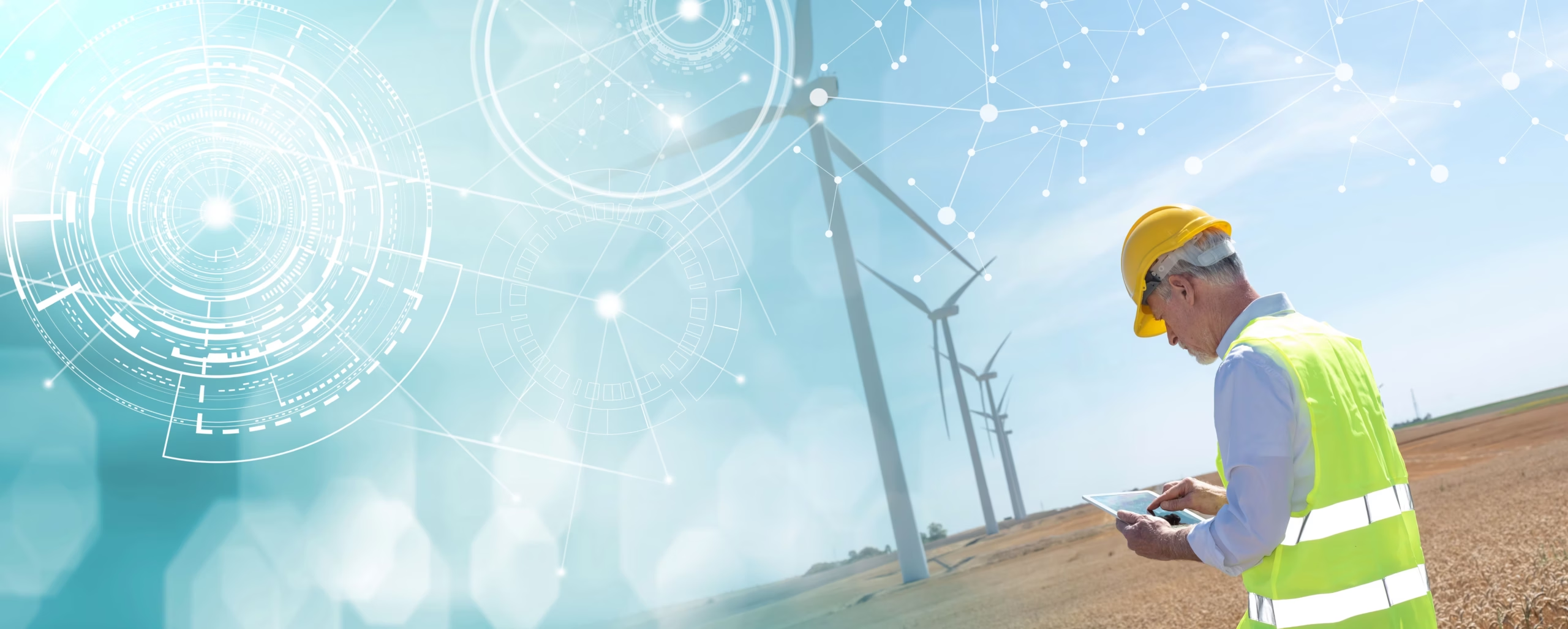The right tools and equipment make a huge difference in how well wind energy projects work, how safe they are, and whether they make financial sense. Wind industry professionals work in tough conditions – often high up in harsh weather. This makes specialized tools vital rather than just nice to have.
Precise measuring devices track key factors like wind speed, direction, temperature and humidity. These measurements help determine how well turbines perform and how much power they generate. Wind power generation needs these accurate measurements to deliver reliable power. These tools also spot potential problems early, which helps avoid lengthy shutdowns and keeps systems running longer.
A wind project’s success depends on picking the right turbine for specific wind conditions. Researchers point out that “Poor turbine selection results in a financially sub-optimal investment“. Teams must do a detailed wind resource assessment before installation to figure out power generation potential and choose the best turbine models. This step matters because wind speed distribution drastically changes power output – wind energy depends on the cube of wind speed.
Digital tools have changed how teams plan and maintain wind projects, and they often determine final investment choices. Advanced software lets engineers test and fine-tune turbines virtually before construction starts. This helps control budgets and finds possible failure points early.
Project management systems help handle these complex projects by bringing together different stakeholders. They manage technical details and reduce risks from changing resources and policies. These tools create systematic ways to add renewable energy while ensuring projects stay valuable throughout their lifetime.
Wind Resource Assessment Tools
Wind Resource Assessment (WRA) forms the backbone of every successful wind energy project. The process collects wind data at potential farm sites over several years. Specialized equipment measures various meteorological parameters to estimate future power generation.
Three-cup anemometers remain the gold standard for wind resource assessment. These devices use cups mounted on a vertical spindle to measure wind speed, with rotation rates matching wind velocity. Sound waves help ultrasonic anemometers measure wind velocity between transducer pairs since the 1950s. These sonic devices achieve refresh rates of 3 Hz when monitoring wind turbines.
Wind direction measurement relies on wind vanes, instruments with a 2,000-year legacy. Modern wind monitoring systems combine anemometers and wind vanes to create a complete picture of wind conditions.
Advanced measurement tools include:
-
- Wind profilers with RADAR or SODAR technology that track air particle movement at varying heights
- Lidars like the ZX 300e Wind Lidar for vertical profiling
- Temperature sensors that deliver vital atmospheric data
Specialized software tools like WindFarmer transform this data into practical applications. These tools optimize wind farm layouts through wind flow analysis, wake models, and blockage effects. The Wind Resource Database gives public access to modeled wind estimates, offering temporal resolution up to 5 minutes and spatial resolution up to 2 kilometers.
The Global Wind Atlas helps developers assess worldwide opportunities. Users can explore windy areas, calculate annual energy production, and select wind data by country or region.
Wind Energy Data Analysis and Software Tools
Wind data analysis needs specialized software tools that can handle massive amounts of weather information. WAsP stands out as an industry standard and developers have used it in 125 countries, selling over 7000 licenses. These advanced tools convert raw measurements into practical insights that help design better wind farms.
WindFarmer software builds on unique experience spanning 35 years and 340 GW of global wind farm energy production assessment. The software uses 900 years of operational data to confirm its methods. It offers complete wake modeling, layout optimization and precise annual energy production forecasts.
Open-source tools give affordable options to developers. NREL’s OpenOA lets stakeholders evaluate wind plant performance through standard methods. This approach reduces investment risk and encourages more wind energy installations.
Windographer makes it easy to import and view wind resource data from all types of formats. The software runs statistical analyzes including measure-correlate-predict (MCP). Advanced forecasting tools like Meteodyn Forecast blend weather predictions with machine learning. These tools can predict power production from 10 minutes to several months ahead.
Layout optimization platforms like Pathfinder and Youwind help developers find connection options for turbines. Developers can compare different layout scenarios quantitatively. These digital tools save months of work by delivering results in hours.
Installation Equipment for Wind Turbines
Wind turbine installation just needs specialized equipment that can handle massive components in challenging environments. Cranes and hoists are the foundations of wind turbine installation operations. Electric chain hoists mounted on jib cranes inside the nacelle help with maintenance and parts replacement.
Offshore installations rely on specialized lifting yokes that have:
-
- Nacelle lifting yokes
- Blade lifting yokes
- Wind turbine rotor lifting tools
- Transition piece lifting tools
Foundation work requires specific equipment too. Onshore concrete foundations use products from mold release agents to superplasticizers that ensure proper concrete production. Equipment for offshore foundation installation has monopile grippers, upending hinges, noise mitigation deployment systems, and pre-piling templates.
Manufacturing operations benefit from workshop cranes like wall console cranes, bridge cranes, and manual hoists. High-quality tools meeting strict safety standards are crucial for electrical installation, especially with components using 16-400 mm² cables.
Safety equipment plays a vital role in the installation process. Wind turbine hoists must work reliably in tough weather conditions. These hoists need adequate IP electrical protection, quick lifting speeds, and large drum capacities. This becomes even more important for offshore applications where environmental challenges are tougher.
Wind Turbine Safety Equipment
Safety is the top priority in wind energy operations. Technicians work at heights over 250 feet and face major fall hazards along with electrical and weather-related risks.
The most important wind turbine safety equipment has:
-
- Fall protection systems (full body harnesses, lanyards, anchor points, vertical rail systems)
- Climbing protection with fail-safe energy absorbers and indicator tapes in webbing
- Climbing helmets designed to prevent lateral deformation
- Safety glasses and goggles to protect eyes
- Specialized gloves that help maintain dexterity
- Protection for ears to prevent damage from turbine noise
- Protection for breathing when working with chemicals or in dusty areas
- Boots with broad soles and deep treads for better stability
- Rescue devices to evacuate in emergencies
Climb assist systems reduce some of the worker’s body weight and minimize climbing-related injuries. Workers stay protected during ascents with ladder safety systems that use carriers and safety sleeves. Specialized equipment gives proper ventilation and emergency extraction capabilities when working in confined spaces inside nacelles.
Descent devices control the lowering speed during rescues. Some models have winches to lift injured workers. Yes, it is crucial to select the right safety equipment. This prevents accidents and increases efficiency by letting technicians work with confidence in challenging environments.
Smaller turbines, for example Vertical Axis Wind Turbines, don’t require such safety measures, as they are a lot lower and because of that safer to install.
Wind Turbine Maintenance Tools
Wind turbines work best when maintained regularly through their operational life. Professional technicians work with specialized hydraulic tools that are the foundations of turbine maintenance. They rely on hydraulic torque wrenches, bolt tensioners, and nut splitters built specifically for tough turbine environments.
The gearbox is crucial to keep the turbine running smoothly and needs special equipment for maintenance. Traditional oil changes take a team of 3-4 technicians about eight hours when done manually. Special oil-change equipment with built-in containment tanks, oil heaters, and flushing systems cuts down time and costs by a lot.
Multiscale convolutional neural networks have proven more accurate than old methods when they analyze vibration signals. The technicians’ toolkit includes:
-
- Thermal imaging cameras to spot overheating and electrical faults
- Ultrasonic testing equipment to find internal cracks and structural problems
- Remote visual inspection tools with oil-clearing scope adapters to check gear teeth and bearings
Modern inspection tech has changed how maintenance works completely. Drones now take detailed pictures of turbine blades and cut inspection time by up to 70% compared to old methods. AI tools that study these images can spot and classify defects with 85% accuracy.
Silicone heating blankets play a key role in fixing composite blades by spreading heat evenly across repair areas.
When it comes to small wind turbines the maintenance is not that complicated – it takes less time and is only required every 1-2 years.
Wind Energy Measuring Instruments
Accurate measurements are the life-blood of successful wind energy projects that rely on special instruments to track wind behavior. That is why at Freen we offer a free feasibility study to make sure the investment will be viable.
With bigger projects cup anemometers are the most common tools to measure wind speed. These devices work with rotating cups on spindles, and their rotation speed matches the wind’s velocity.
Wind vanes help collect complete data by showing wind direction as their arrows point to where the wind comes from. When used with anemometers, they give significant information about common wind patterns needed to place turbines correctly.
Meteorological towers that usually stand 80-120 meters tall hold these instruments at different heights. These structures worked well but have now given way to better remote sensing technologies.
LIDAR systems have reshaped the scene of wind measurement. They shoot laser pulses to detect wind conditions from the ground up to 300 meters. These devices come with big advantages:
-
- Less environmental impact
- Quicker measurement setup
- Budget-friendly compared to regular towers
SODAR technology works like LIDAR but uses sound pulses to measure wind profiles. Both systems remove the need to climb towers and give better vertical wind data profiles.
Ultrasonic wind sensors show the latest development in this field. Their compact design has no moving parts, which makes them perfect for tough environments where regular instruments might stop working.






